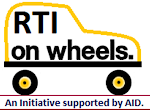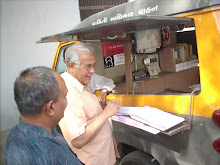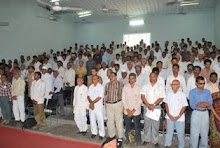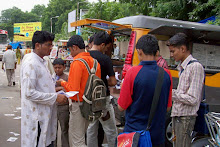Scroll.in: Delhi: Sunday, August
28, 2016.
For an
institution that has consistently pulled up the Executive for corruption and
lack of transparency, the Supreme Court's perceived reluctance to
comprehensively place itself under the Right to Information Act appears to be a
serious paradox.
On August 17,
a three-member bench of the court asked a Constitution bench of at least five
judges to consider a 2010 case relating to an RTI application seeking
information on the appointment of judges. The facts of the six-year-old case
demonstrate just how tiring the long-drawn battle has been for the applicant.
In 2009,
activist Subash Chandra Agrawal filed an RTI request seeking copies of the
correspondence between the Supreme Court and the Centre relating to the elevation
of Justices HL Dattu, AK Ganguly and RM Lodha.
When the
three were appointed to the Supreme Court in 2008, a controversy erupted on how
they had superseded names such as Justice AP Shah, who was then the Chief
Justice of the Delhi High Court and senior to all of them. Justices Lodha and
Dattu went on to become Chief Justices of India.
The RTI
application was rejected twice by the Supreme Court, claiming that its registry
did not handle information pertaining to appointments and it was the President's
office that did so. Agrawal ultimately won a favourable order before the Chief
Information Commission, which allowed the disclosures. But the Central Public
Information Officer of the Supreme Court decided to appeal against the decision
of the Chief Information Commission.
In 2010,
while hearing the appeal, a two-judge bench placed the matter before the Chief
Justice for referral to a larger bench, framing substantial questions of law.
The court
wanted to know if revealing the information should be prohibited to protect the
independence of judiciary and if such revelations would make the collegium –
the group of five senior-most judges who recommend appointments and transfers –
unnecessarily guarded in deliberating future appointments. It also wanted the
larger bench to analyse if the information was exempted under Section 8 (i) (j)
of the RTI Act, which keeps official deliberations of high offices and personal
information unrelated to public activity outside the ambit of the law.
The
inordinate delay
It isn't
clear why KG Balakrishnan, who was the Chief Justice of India at the time, did
not immediately refer the matter to a Constitution bench (which consists of a
minimum of five judges) despite the two judges framing "substantial questions
of law". This decision meant that the case has dragged on for a further
five years.
Agrawal is
not happy with the development. "It is disappointing that a matter of such
seriousness would be delayed for so long," he said. But the activist is hopeful
of an early finish once the larger bench is formed.
He added that
while the RTI applied to the administrative side of the Supreme Court that
handled the day-to-day affairs not related to judicial decision-making, there
was uncertainty on what functions of the court were exclusively administrative
and when exactly matters became part of its judicial functions.
"Sometimes, there is an overlap and this affects disclosures even on the
administrative side," he said.
Why
transparency matters
While the names
of candidates nominated to the Supreme Court eventually reach the public
through a notification issued by the President's office, hardly anyone outside
the collegium gets to know how one candidate is selected over the other. The
appointment of judges has been framed in past judgments as a "discharge of
Constitutional trust". The Constitution gives the President powers to
appoint judges in consultation with the collegium. The Chief Justice holds the
information relating to such deliberations in the complete trust of his
colleagues and hence they are not made public.
In the
present case, it would be enlightening to know why Justice Shah was never
elevated to the Supreme Court despite being highly respected. His celebrated
verdict decriminalising homosexuality, during his tenure in the Delhi High
Court in 2009, is considered a landmark judgment (though it was set aside by
the Supreme Court in 2013).
This desire
of the judiciary to stay out of the ambit of the RTI was apparent as early as
in 2009, when former Chief Justice of India KG Balakrishnan reportedly wrote to
Prime Minister Manmohan Singh expressing concerns over including his office
under the law. Though the RTI Act was passed in 2005, the Congress-led United
Progressive Alliance government was considering substantial changes to the law
in 2009.
The question
of transparency assumes even greater significance in the context of what
happened to the National Judicial Appointments Commission, the body proposed to
replace the collegium. In fact, transparency was the foundation on which the
challenge to the collegium system, in which judges recommend appointment of
other judges, was built by the government.
Despite
overwhelming consensus in Parliament, the Supreme Court chose to set the
commission aside in 2015 to "uphold the independence of judiciary",
arguing that the new body went against the basic structure of the Constitution.
But while doing so, it had promised to improve openness in the collegium.
"Having
committed to improving transparency during the judgment, the Supreme Court
cannot further delay bringing itself entirely under the RTI Act," said K
Chandru, a former Judge of the Madras High Court. He said the RTI already had
enough checks and balances that could be utilised if a request was found to
affect judicial independence.
Effect on
new procedures
This debate
on transparency and RTI also brings to focus the confrontation that could arise
between the Centre and the Supreme Court in framing the new Memorandum of
Procedure, which guides the collegium in appointments. When the National
Judicial Appointments Commission was invalidated, the court asked the
government to come up with a fresh memorandum in consultation with the Chief
Justice.
But can
transparency be ushered in without ensuring information flow to the public?
Positions taken by the Centre and the judiciary indicate that the question of
RTI could become the most contentious point in finalising the new memorandum.
In 2015, the Centre insisted before the Supreme Court that everything
pertaining to judicial appointments will be brought under the RTI Act when the
proposed new commission takes over from the collegium. This failed as the court
struck down the Constitutional amendment that facilitated the formation of the
commission.
Justice
Chandru said that even on the administrative side, many orders of exemption
have been passed. For example, the Supreme Court denied requests for putting
under RTI medical bills of judges. "The moral authority of the courts in
questioning the Executive could be protected only if it rises above all
doubts," he said.














































































